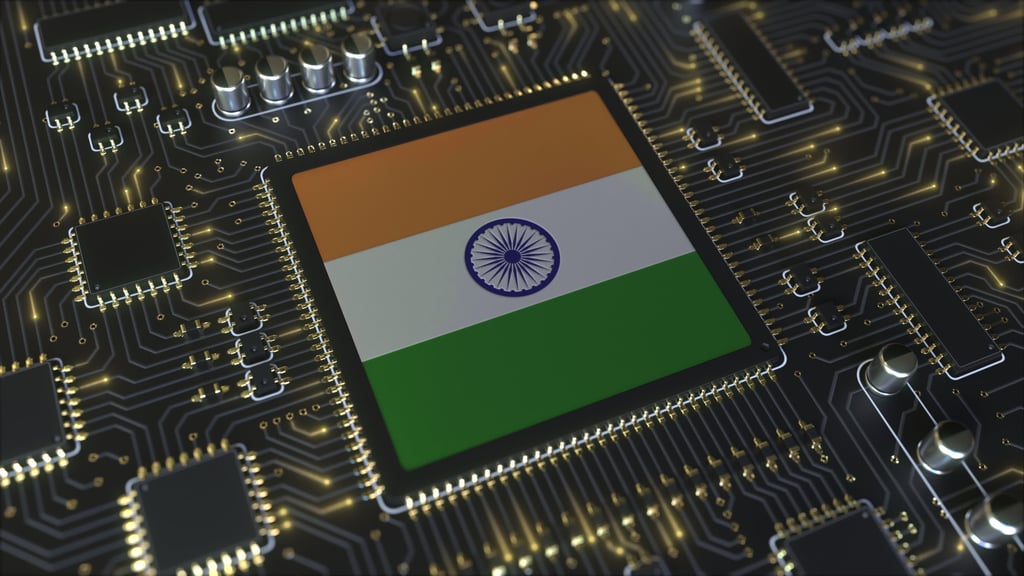Tata Group said it aims to propel India’s semiconductor industry to US $110 billion by 2030, targeting 10 per cent of global demand.
At the forefront of India’s semiconductor ambitions is India’s minister of electronics and information technology, Ashwini Vaishnaw, who said these investments were part of Modi’s efforts to “make India a big manufacturing hub and self-sufficient in some sectors”.

Vaishaw also oversaw a US$2.75 billion deal with US semiconductor company Micron Technology, which broke ground in September on a factory that is set to produce India’s first domestically manufactured microchips by the beginning of 2025.
Experts say these approvals align with India’s ambitious plan to build an end-to-end domestic semiconductor ecosystem – a strategic priority driven by the pandemic’s exposure of India’s over-reliance on global chip supply chains.
India is also hoping to capitalise on foreign firms seeking alternative manufacturing hubs, as trade and geopolitical tensions drive supply chain decoupling from China, which has long been a leader in the chip making industry.
The shift away from China, paired with surging demand for chips – which serve as a foundation for everything from smartphones to electric vehicles – presents a pivotal opportunity for India as it targets becoming a $5 trillion economy in the next few years.
In 2021, the Indian government introduced a $10 billion subsidy programme to incentivise chip makers, covering up to 50 per cent of approved project costs. Both Micron and Tata are benefiting from this scheme for their respective manufacturing facilities under development.
Setting too high a bar?
According to Karthik Nachiappan, a research fellow at the National University of Singapore’s Institute of South Asian Studies, India is going “all in” with respect to microchips, as opposed to only focusing on any one single aspect of the industry.
“India is trying to build an entire chip ecosystem – research and development, design, chip-making, and fabrication and trying to train people who can drive this initiative,” he said.
And while there are some attractive initiatives, subsidies and incentives being pushed by the government to draw in investments, Nachiappan says it will take some time for the country to build out its own domestic supply chain for chips.
“It’s still in the early stages and will probably take decades to reach where other countries are,” he added, saying that domestic constraints such as land, energy and water supply, as well as institutional issues like high customs duties, further threaten India’s chip-making aspirations.
“Subsidies alone are insufficient. What’s required is an ecosystem that collectively supports chip-making,” he said.
Critics argue India’s ambition to compete with semiconductor powerhouses like Japan, Taiwan, and South Korea may be too ambitious, given their long-established dominance in the field.
However, the government has remained steadfast and confident in its abilities. Minister Vaishnaw has stated India will be among the top five countries for semiconductor manufacturing within the next five years, citing the country’s successful track record in growing its electronics manufacturing sector over the past decade after encouraging Apple and its partners to start making and selling iPhones in India.
“Electronics manufacturing was practically negligible 10 years back. Today, the electronics manufacturing industry is US$110 billion worth,” he said in March. “Apple alone is hiring more than [100,000 people] who are employed in factories for iPhone manufacturing.”
According to Anurag Awasthi, vice-president of the India Electronics and Semiconductor Association, India’s strengths in semiconductor manufacturing include its large domestic demand, demographic dividend and design capabilities.
“These three aspects are and will be the drivers to attract both domestic and international investments on a path to becoming a competitive player globally,” he said, adding that the scope for chip manufacturing is vast in India and is being aptly addressed “at all levels by the government, industry and academia”.
An attractive alternative
India’s subsidy programme appears to have seen more success, following the recent deals with Tata and Micron, after initially facing challenges. A consortium of industrial group Vedanta and Taiwanese Apple supplier Foxconn was among three early applicants that initially failed to qualify for the scheme. A consortium of Mumbai-based metals and mining conglomerate Vedanta and Taiwanese Apple supplier Foxconn was among three early applicants that initially did not qualify for the scheme, after a deal between the two failed to materialise.
While Foxconn’s withdrawal last year was seen by many as a setback, Kyunghoon Kim, an associate research fellow focusing on industrial policies at the Korea Institute for International Economic Policy, said that it was “not that serious”, and that such talks do not always work out at early stages.
In January, Foxconn announced a new joint venture with India’s HCL group to re-enter the Indian semiconductor sector with a semiconductor assembly and testing facility.

Nachiappan believes India’s semiconductor industry will thrive amid global geopolitical tensions, as they open up economic opportunities for alternative markets like India.
“Foreign firms will be interested in India if they can work with prevailing constraints and recreate a supply chain that supports semiconductor development and production,” he said. “India will remain attractive but it has to address domestic constraints.”
Meanwhile, Kim forecasts India’s semiconductor demand will surge alongside its growing domestic electronics industry but predicts the country will remain heavily reliant on imports for at least a decade due to the scale of demand outpacing local supply.
“The Indian government is serious about fostering the semiconductor industry but it will be a very long journey,” he said. “India has taken one small but significant step.”
With additional reporting from Bloomberg





